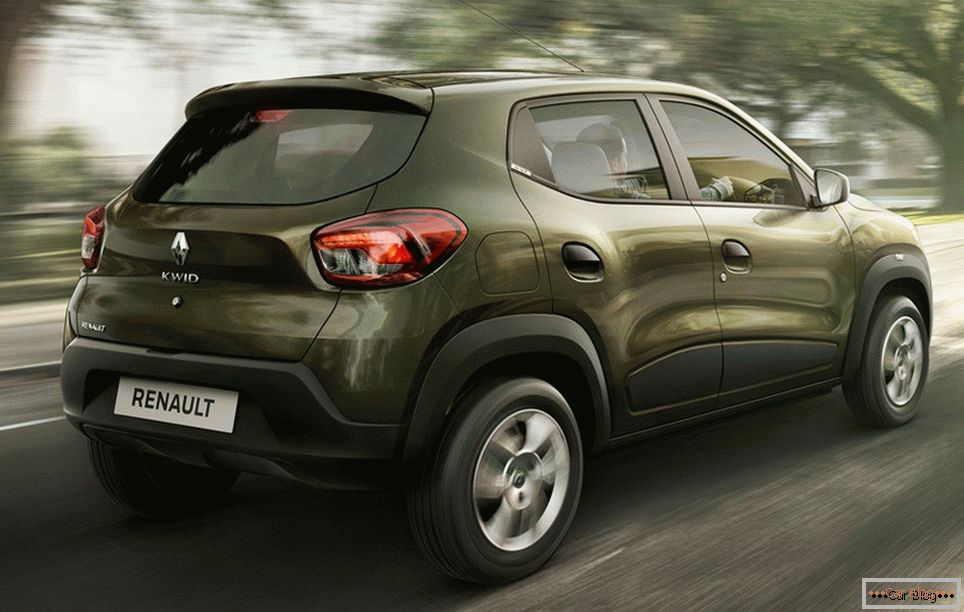>
The whole world has long been aware of how to impress others by getting “little blood” - for money, they sew labels of famous brands on Chinese-made clothes, remove signs of motor volume and bundling from base cars, and also buy goods that only look expensive and solid . Are those crossovers, the most famous representatives of which are Honda CR-V and Toyota RAV4? After all, cars are equipped with powerful engines with a large working volume, and also have far from low cost - however, despite the brutal appearance, they are not positioned as off-road vehicles. What they are - an imitation of high-traffic vehicles or simply improved in the direction of greater practicality of passenger cars, will show the comparison of RAV4 against the NRW.
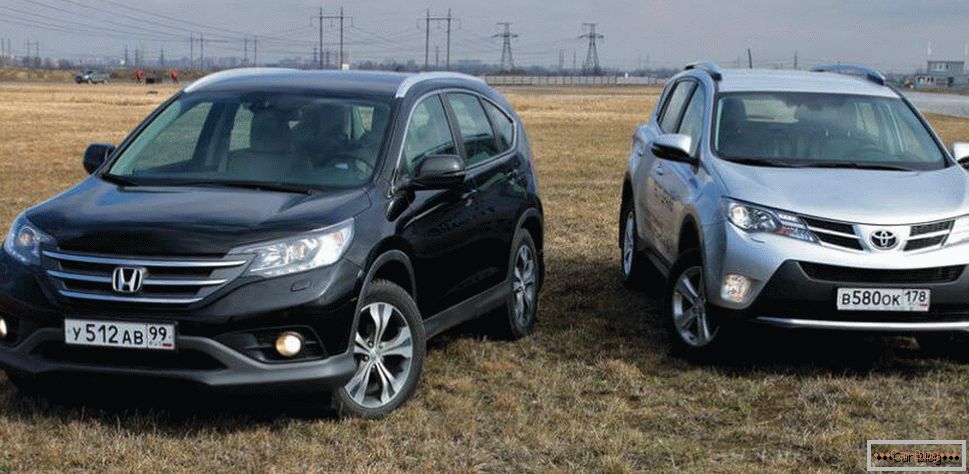
Modern powerful crossovers - Honda CR-V and Toyota RAV4
In different road conditions
Dirty competition
If you look outside at the Toyota RAV4, you might think that we face a slightly reduced version of the Land Cruiser - the similarity is especially noticeable when looking at the profile. In addition, the clearance of almost 200 mm and the button for locking the center differential instill confidence that the RAV4 will be able to overcome the most serious obstacles of those that are in the teeth of modern crossovers. However, in practice, everything is much more difficult - Toyota RAV4 easily enters a deep puddle on a primer, reaches the middle and begins to get bogged down. The natural reaction of the driver with driving experience off-road - smoothly but actively increase the fuel supply to prevent the car from stopping and finally getting stuck. For Toyota, such an action would be a big mistake - electronics, which does not have an “off-road” algorithm of operation, recognize slip and conclude that the car hit an icy road - the result is a sharp decrease in the engine speed of the RAV4, as a result of which the car stalls.
Читать далее о сравнении автомобилей Honda CR-V и Toyota RAV4-->Пора звонить трактористу — однако даже после такого конфуза хочется дать Toyota RAV4 ещё один шанс оправдаться и защитить честь японских кроссоверов. Теперь машина будет двигаться по сильно пересечённой местности, изобилующей глубокими канавами и крутыми косогорами. И вновь приходится остановить испытание — low hanging bumpers of the RAV4 begin to ominously abut the ground, which indicates a large material outlay in the case of continued movement in this mode. The third and last chance relates to checking the locking of the Toyota RAV4 center differential - indeed, the car starts to move much more confidently on the sodden primer. But all the enthusiasm received by the RAV4 as a result of pressing the button lasts 10–15 minutes, after which the electronics disconnects the overheated clutch, and again the operator has to call the tractor operator who is completely tired of the side work.
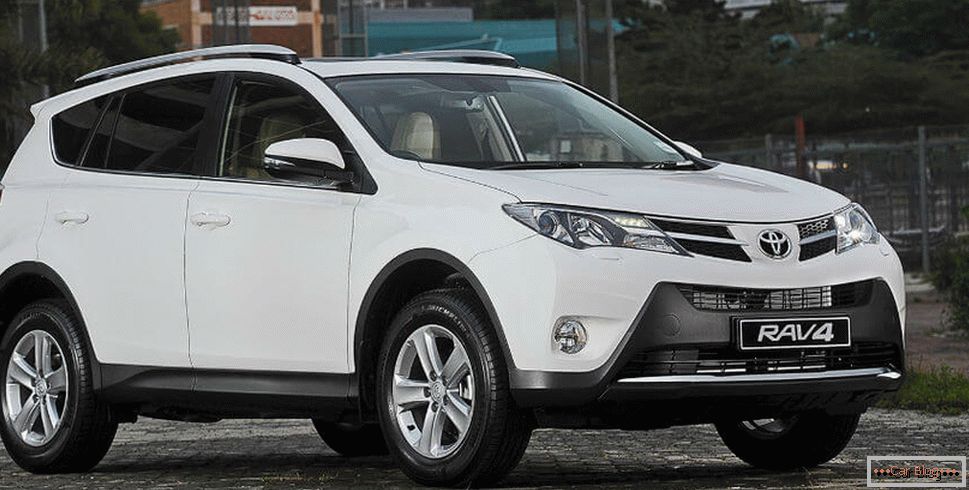
If we talk about who has a more advanced all-wheel drive system - SRV or RAV4, then the disputes will be absolutely useless, because both vehicles have a transmission based on the use of a multi-plate clutch controlled by electronics. But how can you not recall the recent scandal, when the technical specialists of the Swedish automotive edition found that the four-wheel drive Honda CR-V in half the cases ... just does not work! Check if this is the case - the Honda CR-V plunges into the puddle quite cheerfully, and stops at about the same place as the Toyota RAV4. At the same time, the problem cannot be attributed to the intervention of the stabilization system - in the case of the high-speed Honda motor, it works much later. The reason is a completely different disadvantage - the ground clearance of the Honda CR-V is only 187 mm, and some elements of the chassis are slightly lower, which leads to a quick and irrevocable bridging of the crossover in thick mud.

Despite the fact that around the perimeter of the lower part of the Honda CR-V body there is a strip of unpainted plastic that simulates off-road protection, it doesn’t carry any functional load - the plastic body kit drops very low and significantly worsens the entry and exit angles even compared to such a crossover Toyota RAV4. In addition, locking center differential on the CR-V is not provided at all. What can I say - after 5 minutes of active movement on the primer, heavily moistened with yesterday's rain, Honda stops as a result of clutch overheating. It seems that this problem is a typical "disease" of modern crossovers, but the Honda CR-V surrenders before the others. The final verdict - only asphalt, and only good road conditions, and the maximum feat for the CR-V should be leaving the snowy yard.
Back on asphalt
Now it is worth checking how the cars behave in their native element, that is, on a good road, which has high-quality coating and all the necessary amenities, such as marking and fencing on time. Toyota RAV4 is perceived as a real “king of the road” - high landing allows you to look through the windows not only of this off-road vehicle, but also a taxi. At the same time, there is no discomfort associated with the increased center of gravity and the large mass of the car in the city and on the suburban roads. On broken asphalt from long-term operation, the Toyota RAV4 behaves completely ambiguous - the positive is that the car confidently passes any irregularities, without notifying about it with booming passengers, and among the minuses can be called extremely unpleasant booster buildup.
Test drive car Toyota RAV4:
If you choose - Honda SRV or RAV4, then Toyota would be preferable for relatively low speeds in which it shows enviable smoothness and softness. But the increase in speed displayed on the RAV4 is not the most beneficial way, as it causes tangible rolls and even small drifts, which are manifested in particularly sharp turns. Of course, To get into big trouble does not allow the stabilization system of Toyota, but it works very unpleasant, forcing to reset the speed as a result of an instantaneous drop in engine speed.
But the Honda CR-V is a real racing car - in any case, this is indicated by a stiffer suspension, which makes passengers jump a little when hit in the next deep hole in the road. On the track, such settings are taken for granted, but in the city, the Honda CR-V sometimes even annoys the driver, forcing them to slow down before each joint of the roadway and every pothole. However the suspension is quite energy-intensive and in any case does not allow the bottom of the “speed bumps” to touch, although sometimes to passengers inside, it seems that this was the reason for the disturbance of their rest.
Test drive a Honda CR-V car:
But the relatively short-racks perfectly behave on a winding road, where the Honda CR-V has no equal among crossovers. Banks, which are somewhat annoying owners of Toyota RAV4, are completely absent here, which pleases fans of active driving style. It seems as if the car itself forces the driver to press the gas pedal more and more, trying to catch the moment when the Honda CR-V’s incredibly sensitive steering finally refuses to obey the person and the car begins to slide, going beyond its limits. However, in practice, creating such a Honda CR-V will be possible only for a very desperate person or a racing pilot. Honda also has its own stabilization system, but it works much later, giving the driver the opportunity to fully experience the influx of adrenaline in the blood.
Drivers
Motors
In the US, the Toyota RAV4 can be equipped with a powerful V6 engine, which makes it a real sports car, allowing you to confidently exceed the 200 km / h threshold on an unlimited highway going to the horizon. But for our country and most other regions of the world, the reality turns out to be much more prosaic - the top engine is a 2.5-liter Toyota engine and 180 horsepower. Such a power unit is ideally suited for the large RAV4 crossover - most of the thrust is available already at low revs, and with increasing speed the car still has a significant margin on dynamics, allowing it to perform active accelerations even on country roads. If the car had a serious all-wheel drive, the Toyota RAV4 engine would allow it to make raids on a very serious off-road - the reaction to pressing the gas pedal is almost instantaneous, which makes it possible to actively climb slopes without risking halfway through the lack of traction. However, the appetite of the Toyota power unit is rather big - in the city one can safely count on consuming 10–12 liters of gasoline per 100 km, and on the highway the figure decreases only to 7–8 liters.
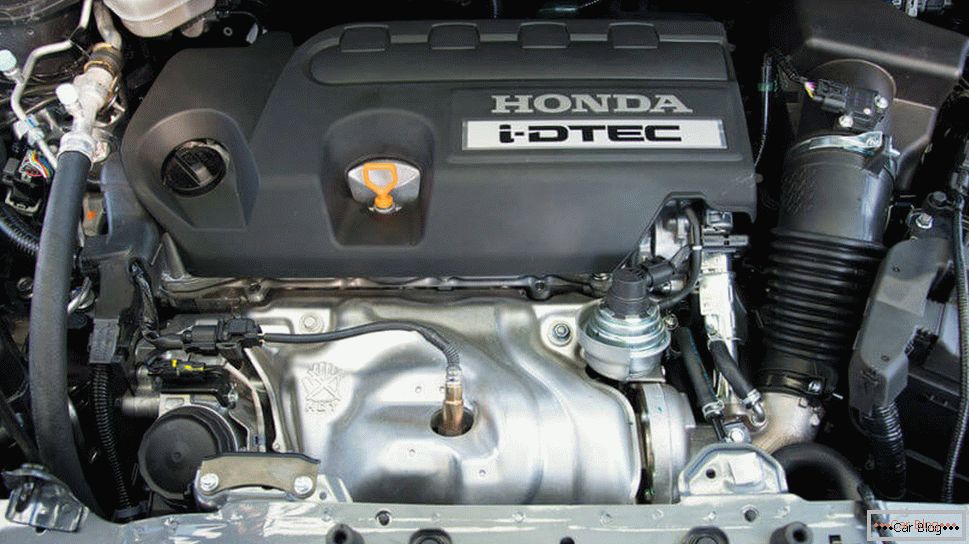
 Discounts for new cars! Profitable loan from 9.9% installments 0%
Discounts for new cars! Profitable loan from 9.9% installments 0%  adom.ru
adom.ru
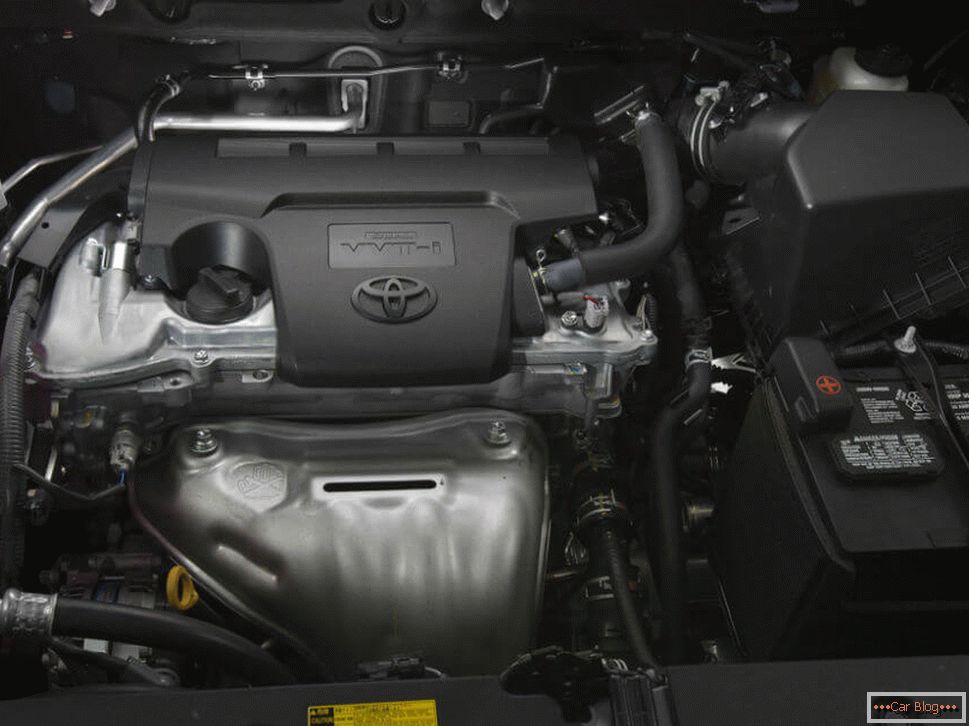
Like the Toyota RAV4, the Honda NRW is equipped with a motor of considerable volume - however, its drive unit is taken almost unchanged from the passenger Accord model with all the ensuing consequences. The power rating of the Honda CR-V is slightly higher than that of the Toyota RAV4, but to use it, you have to constantly keep high rpm, pushing the gas pedal more than half. As a result, it is impossible to move calmly on the CR-V - the only driving mode in which you can get rid of serious jerks is driving on a flat country road, when the potential of the car is used only partially. In addition, it is even good that the Honda CR-V is not equipped with good off-road equipment, because on rough terrain it would be extremely inconvenient to drive such a power unit. Losing in the dynamics of acceleration of the crossover from Toyota, Honda CR-V also consumes more fuel - the average figure in the city is 12 liters, and if you want to show everything that a high-speed engine is capable of, the figure reaches 15–16 liters per 100 km.
Transmissions
What lies behind the leadership of Toyota - can you really so well tune the engine so that it is effective in all driving modes? Of course, it is possible - but a considerable share of the success of the RAV4 is due to the use of modern six-speed automatic transmission. Like the Honda CR-V, the Toyota RAV4 is equipped with a traditional hydromechanical unit - the engineers of the company decided to make an exception for the large crossover and did not use the nowadays trendy or robotic gearboxes. Although sometimes it seems as if the RAV4 node is indeed devoid of any steps and smoothly changes the gear ratio in accordance with the change in driving mode - so imperceptibly are the switchings made. As a result, the Toyota RAV4 is not only faster, but also more comfortable than most of its rivals in the crossover class.
If the Toyota "automatic" is one of the most important components of success, then the Honda CR-V is the "root of evil." Of course, this five-speed unit is constantly subject to minor modifications and changes in settings, but its design is already quite outdated for a long time, which forces us to put up with large delays when switching, and also not always an adequate choice of the current gear ratio. Largely due to the Honda CR-V transmission, the RAV4 loses in areas of comparison such as efficiency and dynamics. Perhaps the CR-V with manual transmission will be a little more balanced, but in our country such cars are not in great demand.
| Car model: | Toyota RAV4 | Honda CR-V |
| Producing country: | Japan | Japan |
| Body Type: | Crossover | Crossover |
| Number of places: | 5 | 5 |
| Number of doors: | 5 | 5 |
| Engine capacity, cubic cm: | 2494 | 2354 |
| Power, l. c./about min .: | 180/6000 | 190/7000 |
| Maximum speed, km / h: | 180 | 184 |
| Acceleration to 100 km / h, from: | 9,4 | 10,7 |
| Type of drive: | Full | Full |
| CAT: | 6 automatic transmission | 5 automatic transmission |
| Fuel type: | Petrol AI-95 | Petrol AI-95 |
| Consumption per 100 km: | In the city of 11.4 / Outside the city of 8.5 | In the city of 11.9 / Out of town 8.4 |
| Length, mm: | 4570 | 4571 |
| Width, mm: | 1845 | 1820 |
| Height, mm: | 1660 | 1685 |
| Clearance, mm: | 197 | 187 |
| Tire size: | 225/65 R17 | 225/60 R18 |
| Curb weight, kg: | 1610 | 1608 |
| Full weight, kg: | 2080 | 2055 |
| Fuel tank capacity: | 60 | 58 |

Practicality
Leaving the design disputes aside, we turn directly to the consideration of vehicle capacity, which is a very important characteristic for crossovers. In Russia, Toyota RAV4 is sold only in the configuration with a full-size spare wheel - this limits the volume of the luggage compartment with the rear sofa laid out in a value of 500 liters. However, if you do not use the rear seats Toyota, then the capacity can be increased to quite decent 1.6 cubic meters. Passengers do not complain of tightness - even people with fairly large build feel at ease in the RAV4, due to the large amount of space in width, height and distance to the front seats.
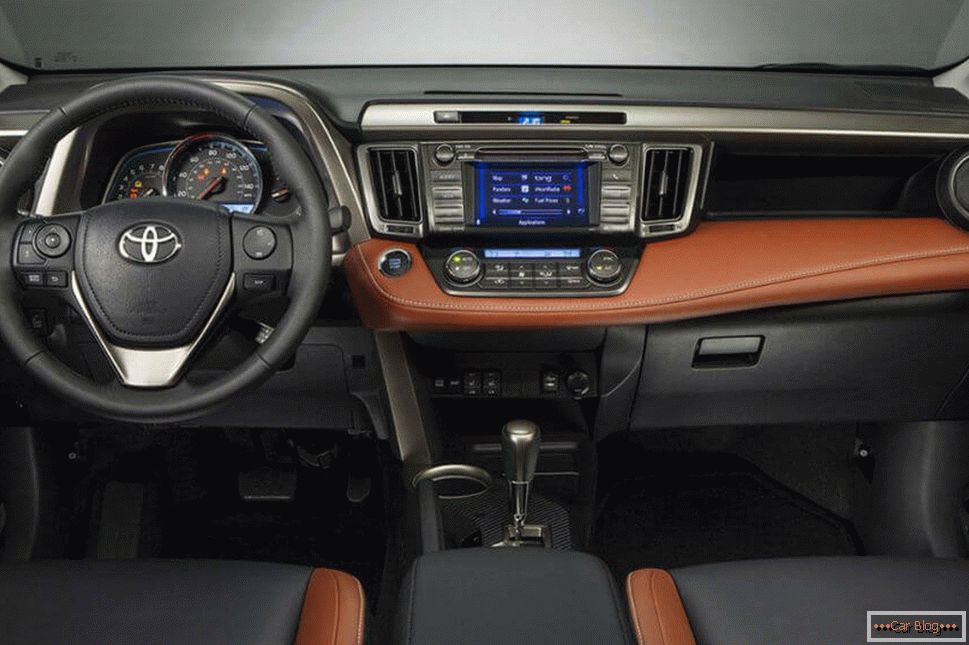
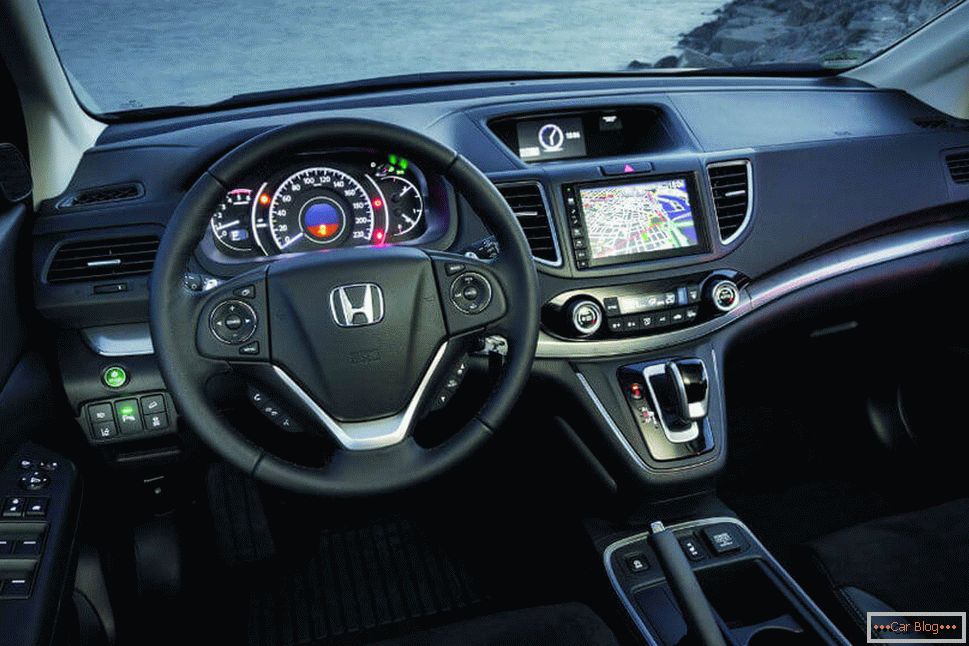
Arranging a comparison of the RAV4 against the Honda NRW, at first you think that the last crossover will win, because in the normal state its trunk has a volume of 580 liters. However, it is necessary to fold the seats, and the figure increases to ... 1.1 cubic meters! Such a small increase is due to the fact that Honda specialists thought about cargo transportation last - the dynamics for the CR-V was a priority. This is evidenced by a small rear couch Honda CR-V, on which three people fit only on condition that they are willing to endure the tightness and touch of the front seats with their knees.
Asphalt cruisers
If the name Land Cruiser is translated as “Land Cruiser”, then these crossovers would be called asphalt cruisers. The large size of the Toyota RAV4 and Honda CR-V make both cars practical and roomy, but do not give them the right to be called an off-road vehicle. This is especially true of Honda CR-V, the element of which is the rapid movement of international routes. Toyota RAV4 in many ways more pleasant to drive, but do not forget about the presence of certain nuances associated with a large mass and moderately soft undercarriage.


